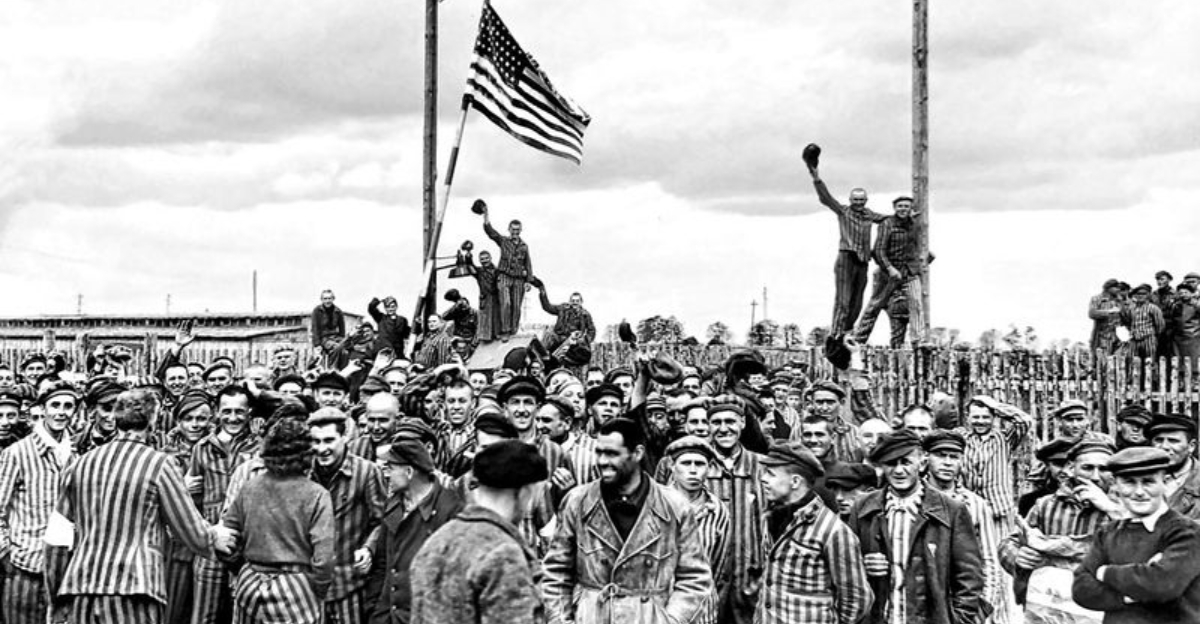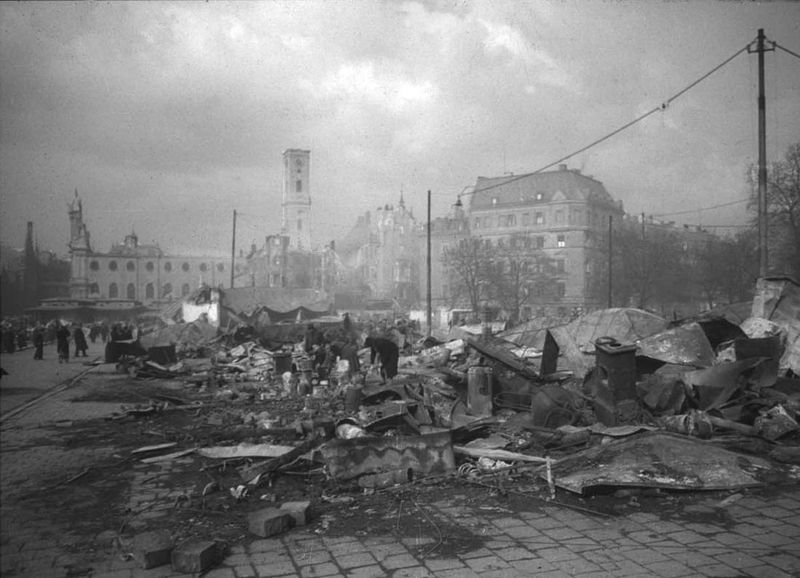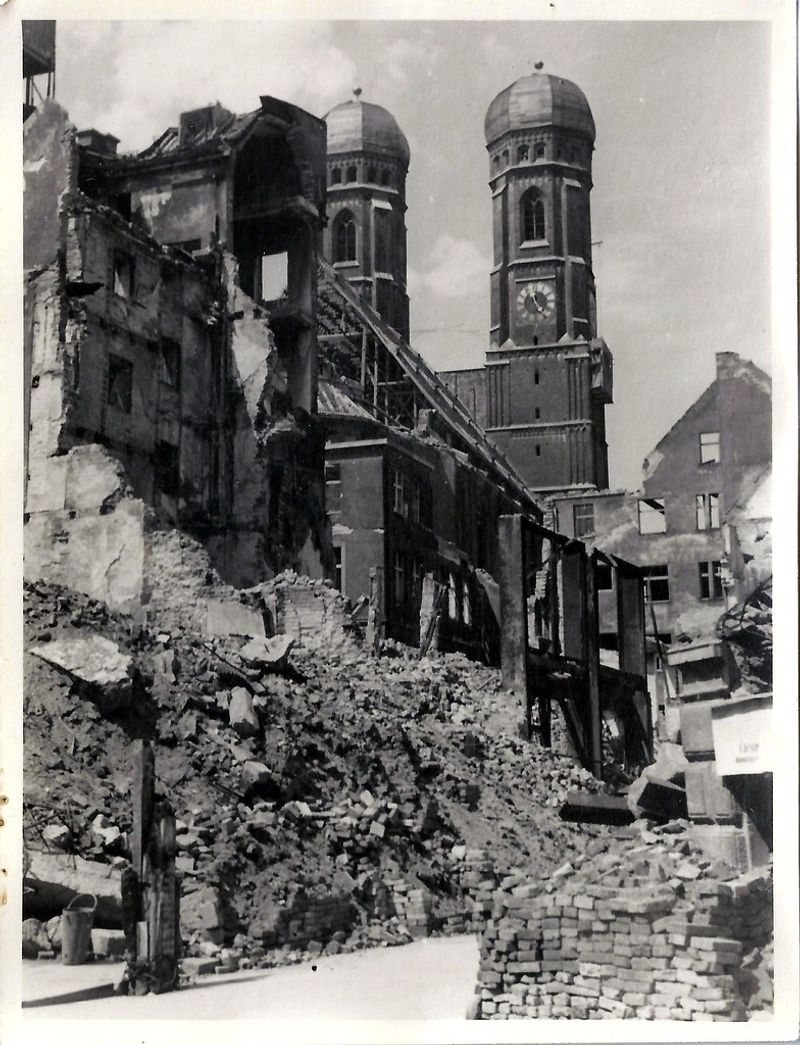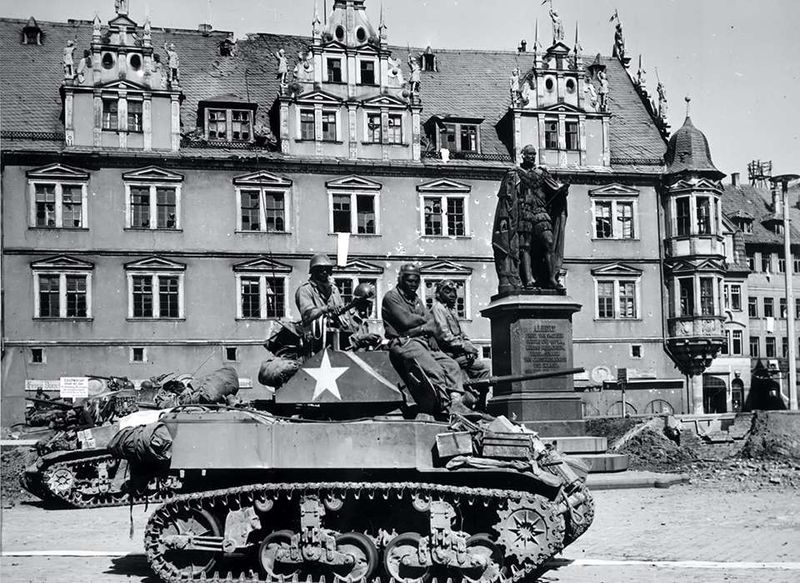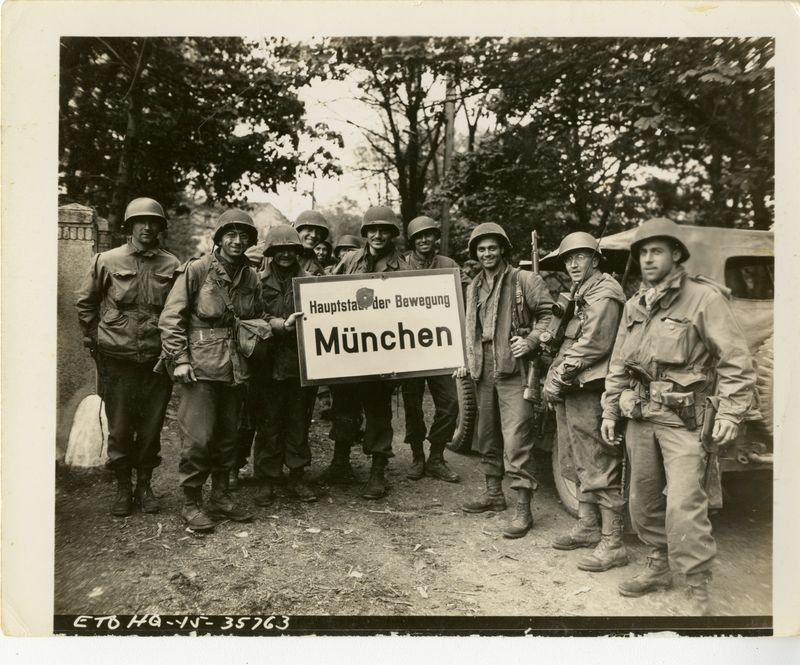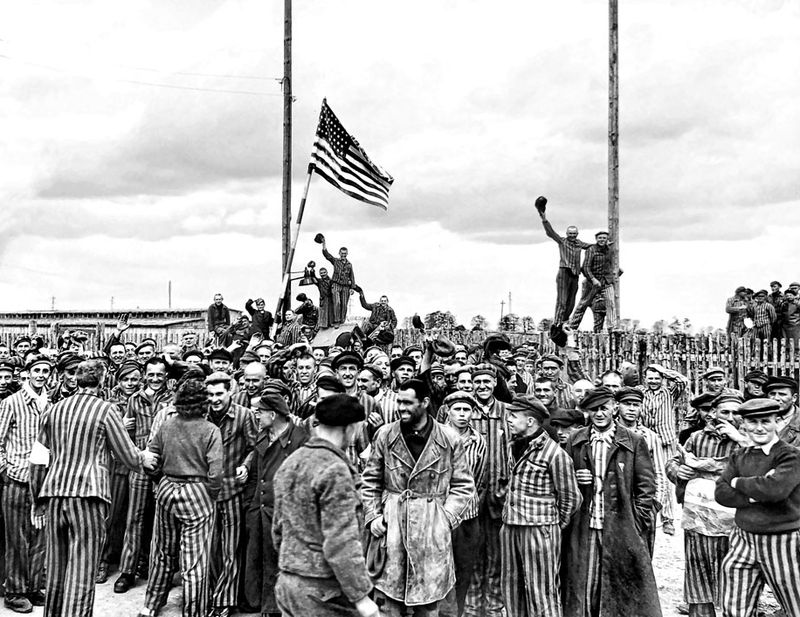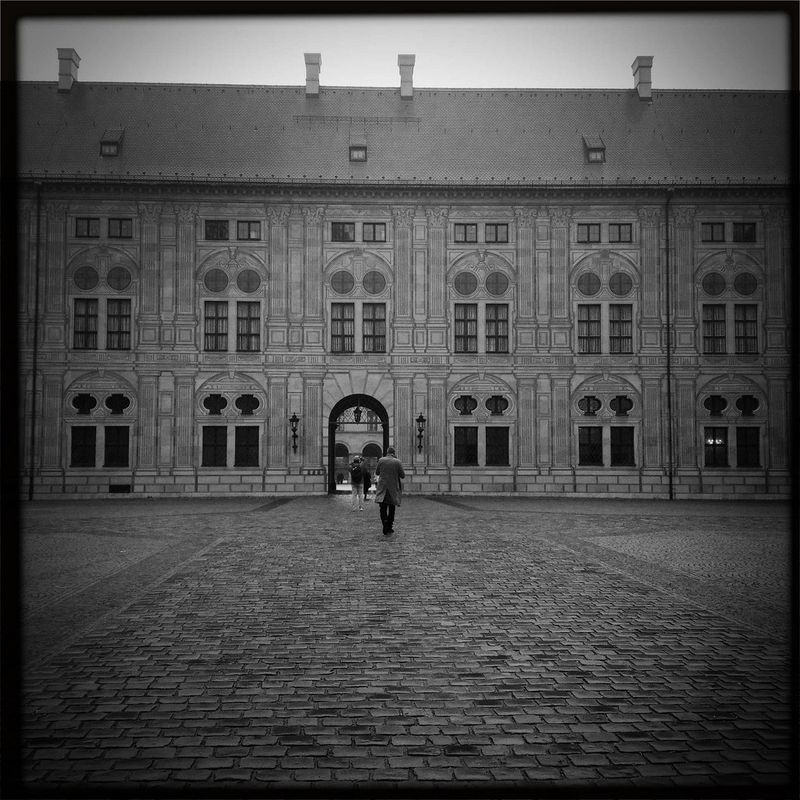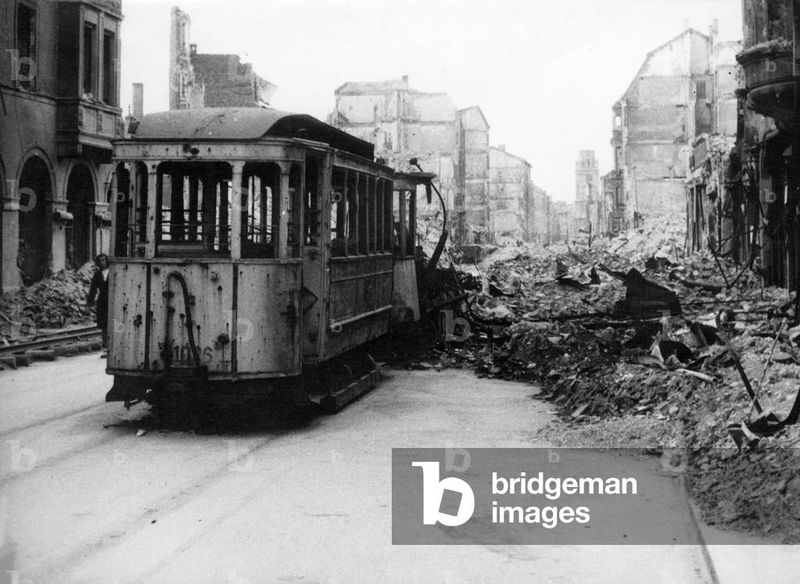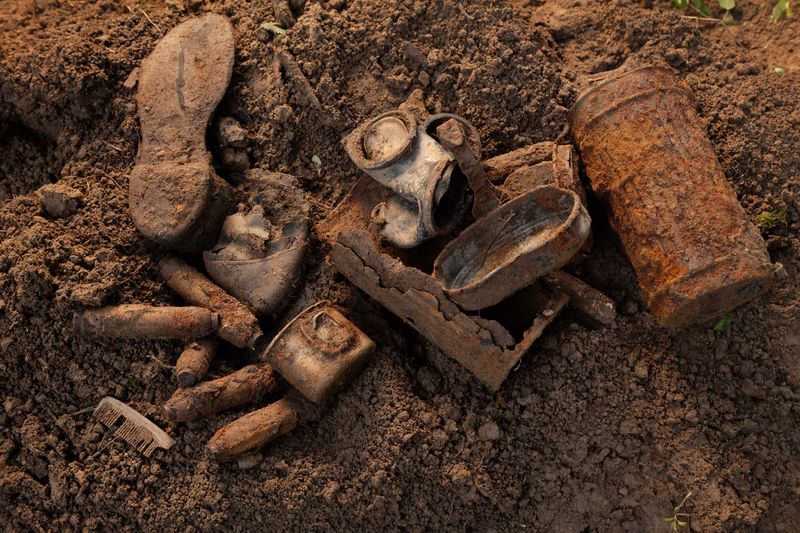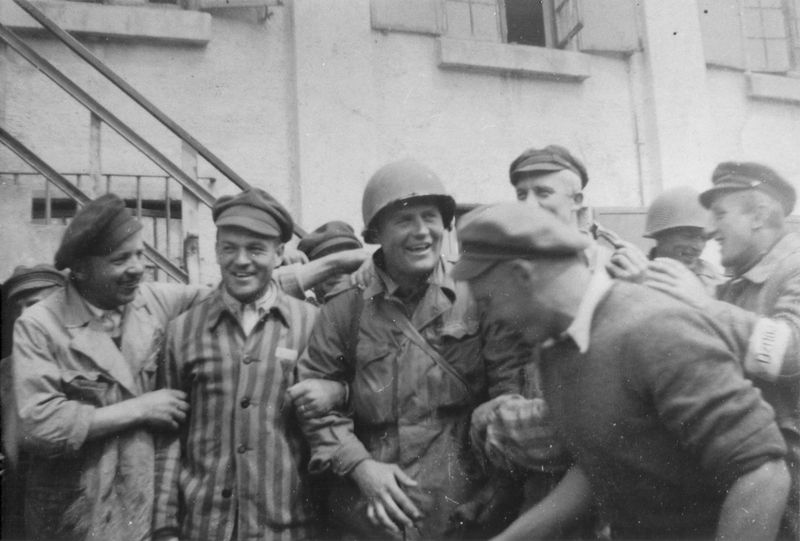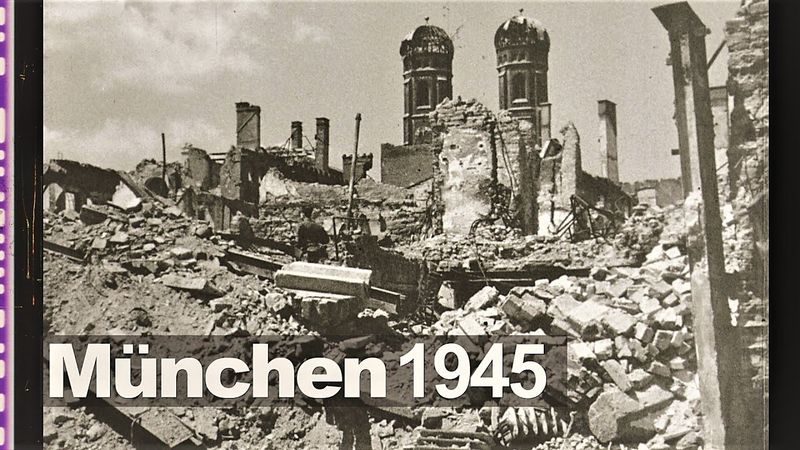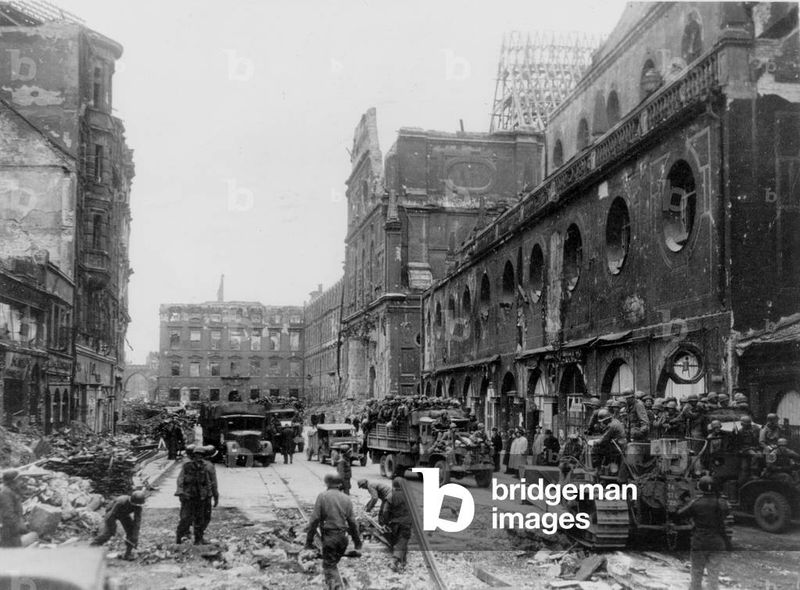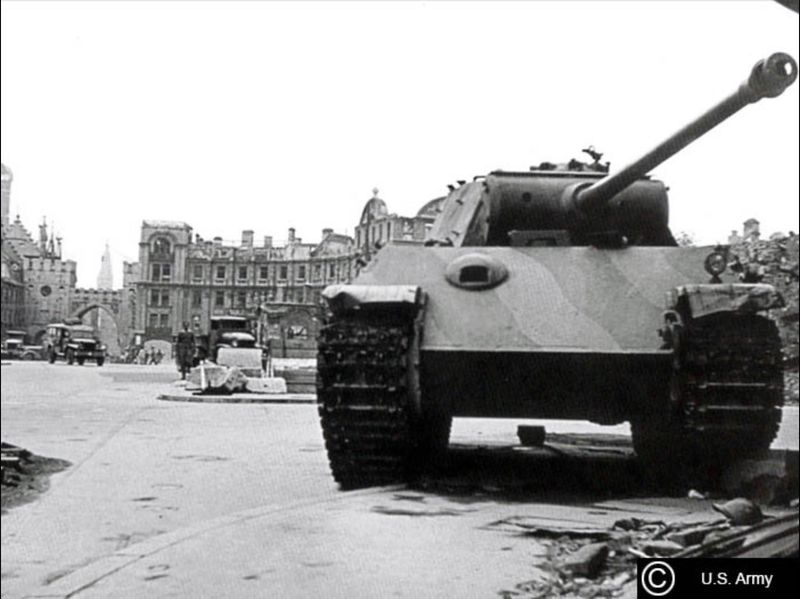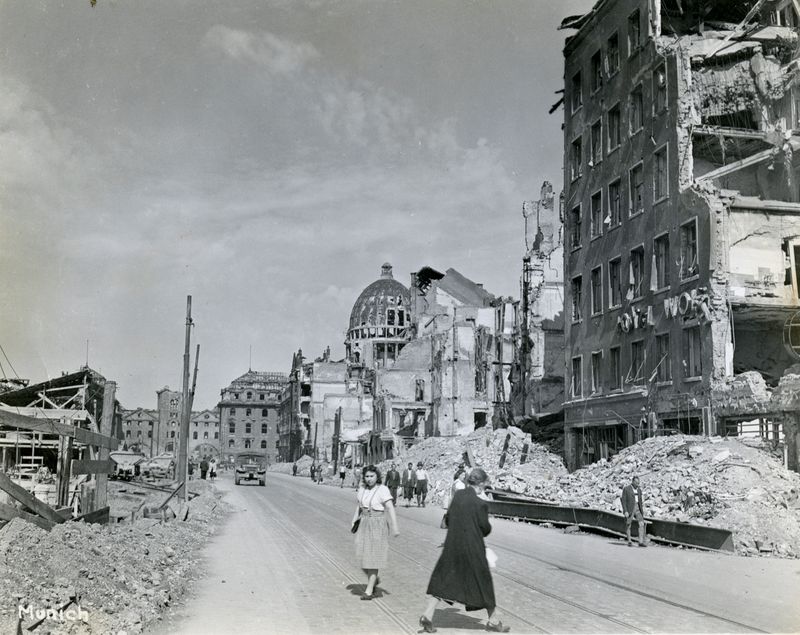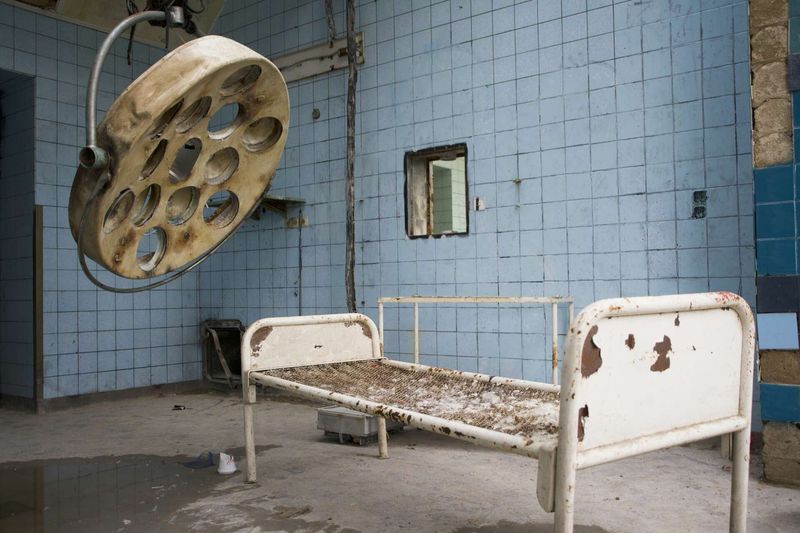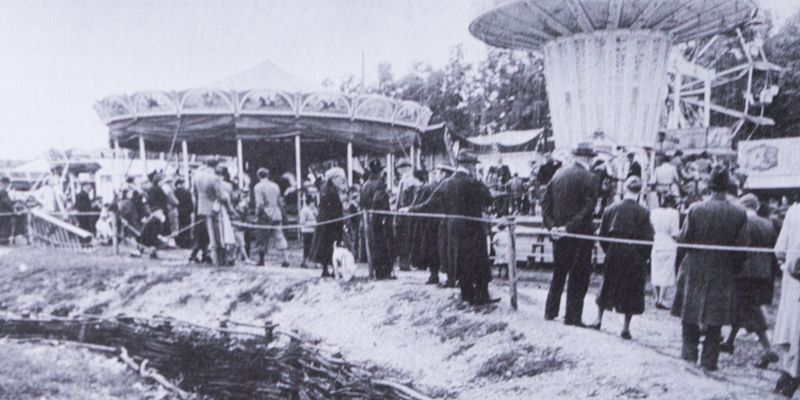In 1945, Nazi Munich witnessed a dramatic transformation as the city fell to Allied forces. The ravages of war left a stark imprint on its landscape, marking the end of an era. Below are 17 compelling facts that illustrate the city’s condition during this pivotal moment in history.
1. Ravaged City Center
The heart of Munich lay in ruins, a testament to the relentless Allied air raids. Over seventy bombings had left the city center with collapsed roofs and facades marked by the scars of war. Streets once bustling with life were now choked with rubble, a haunting reminder of the conflict’s devastation.
In the shadows of these wrecked buildings, echoes of a past life lingered, lost to the chaos. The resilience of a city once vibrant now lay buried beneath the layers of destruction, waiting for a chance to rebuild and heal.
2. Frauenkirche Towers Amid Ruins
Amidst the devastation, the Frauenkirche’s onion-topped towers stood resilient, defying the surrounding chaos. These iconic landmarks, untouched by the bombings, rose above a sea of debris, offering a glimmer of hope and continuity.
The contrast between the towers and the wreckage highlighted the church’s enduring presence. It served as a beacon for the city’s inhabitants, a symbol of faith and persistence amidst the turmoil, as Munich grappled with its war-torn identity.
3. US Armor Rolling In
On a pivotal day in late April 1945, the roar of Sherman tanks signaled a new dawn for Munich. These armored giants of the U.S. 20th Armored Division rumbled down major boulevards like Leopoldstraße, symbolizing the impending liberation.
The sight of these tanks rolling through the city was both a relief and a harbinger of change. To many, it marked the end of oppression and the beginning of a new era. The steel behemoths were not just vehicles; they embodied hope, freedom, and the promise of restored peace.
4. American Infantry in the Streets
With purposeful strides, American infantry from the 42nd and 45th Divisions entered Munich, rifles ready. Their presence on the city’s streets marked a turning point, as liberation unfolded block by block.
The soldiers moved with determination, their mission clear amidst the chaos. To the residents, these infantrymen were liberators, heralds of new beginnings. Their march through Munich was not just a military maneuver but a reclamation of freedom, a poignant moment in the city’s turbulent history.
5. US Flag Over City Hall
The image of the Stars and Stripes hoisted over Munich’s Neues Rathaus symbolized the end of an era. As American soldiers unfurled the flag on Marienplatz’s historic balcony, a new chapter began.
The flag waved proudly, a sign of liberation and the collapse of Nazi rule. For Munich’s inhabitants, it represented hope and the start of rebuilding. The raising of the flag was more than a military triumph—it was a testament to regained freedom, a visual proclamation of victory and renewal.
6. Ruins of the Residenz Palace
Once a symbol of royal grandeur, the Residenz Palace lay in ruins, a casualty of the war. Its courtyard and wings, once bustling with life, now stood silent and shattered.
Toppled stone columns and broken statues littered the area, whispering tales of past glory. The palace’s ruins were a stark reminder of the cultural and historical losses suffered during the conflict, embodying the broader devastation that Munich endured.
7. Wrecked Trams and Buses
Burnt-out trams and gutted buses lined Munich’s tracks, silent witnesses to the sudden evacuation and fierce urban combat. These wrecks told stories of chaos and disruption as the city grappled with war’s immediate impact.
The skeletal remains of public transport served as grim reminders of the conflict’s reach into everyday life. They stood frozen in time, marking the abrupt halt of ordinary existence and the colossal task of rebuilding that lay ahead.
8. Nazi Relics Among Ruins
Amidst the rubble, relics of a fallen regime lay discarded—swastika flags and torn banners, once symbols of power, now mere debris. These remnants of propaganda were cast aside, their significance erased by the march of history.
For Munich, these abandoned relics represented a rejection of a dark past. They were poignant symbols of the city’s desire to move forward, to redefine its identity in the aftermath of war, and to embrace a future free from the shadows of tyranny.
9. Liberated Dachau Prisoners in Munich
Through Munich’s streets, groups of emaciated Dachau survivors moved, their faces gaunt, their eyes haunted. As they passed en route to aid stations, their presence was a stark reminder of the war’s human toll.
These survivors, freed from unimaginable horrors, embodied resilience in the face of adversity. Their passage through Munich was not just a journey to recovery but also a testament to human endurance and the unyielding spirit of survival.
10. Military Police and Bomb Craters
U.S. military police navigated the wrecked urban battlefield of Munich, directing troops around gaping bomb craters and shattered cobblestones. Each step was a reminder of the city’s recent trials.
These scenes of destruction framed the soldiers’ careful movements, highlighting the challenges of securing a devastated metropolis. The MPs’ role was crucial in maintaining order amidst the chaos, ensuring that Munich’s streets, marked by conflict, could begin the path to normalcy.
11. Charred Ruins of the Viktualienmarkt
Munich’s central market square, the Viktualienmarkt, stood blackened and empty, its once vibrant stalls reduced to charred remains. This scene of desolation captured the stark reality of wartime destruction.
The market, a bustling hub of commerce, now lay silent, its spirit smothered by conflict. Yet, even in its devastation, it held the promise of rebirth, a reminder that Munich, too, would rise from its ashes.
12. Bombed-Out Residential Blocks
Entire neighborhoods of Munich were reduced to rows of gutted shells—multi-story tenements with exposed interiors and empty window frames. These residential blocks, once homes, now stood as haunting reminders of war’s indiscriminate reach.
The absence of life and the eerie silence underscored the immense human cost, as families were displaced and communities shattered. Munich faced the daunting challenge of rebuilding not just its structures but the fabric of its society.
13. Military Vehicles on Karlsplatz
Karlsplatz, known as Stachus, became a temporary haven for military vehicles—jeeps, half-tracks, and supply trucks parked amid the debris. This scene reflected the logistical efforts behind the liberation.
As supplies caught up with advancing troops, the vehicles symbolized the shift from conflict to stabilization. The presence of these machines in the heart of Munich marked the city’s gradual return to order, a transition from chaos to a semblance of normalcy.
14. Smoke Rising Over the Skyline
Columns of black smoke rose over Munich’s skyline, a somber silhouette against the majestic Alps. Fires smoldered in distant blocks, a visual testament to the ongoing devastation.
The juxtaposition of nature’s beauty and war’s chaos underscored the city’s plight. Despite the destruction, the enduring skyline hinted at resilience. Munich’s spirit, like the skyline, would endure, rising above the ashes to rebuild and renew.
15. Makeshift Aid Stations
In the bombed-out courtyards of Munich, makeshift aid stations sprang up to treat the wounded—soldiers and civilians alike. These tents and field hospitals were oases of care amidst the ruins.
The medical staff worked tirelessly, embodying compassion and humanity. Their efforts symbolized hope, offering solace and healing in a landscape scarred by conflict. These stations were vital to Munich’s recovery, a first step towards restoring health and rebuilding lives.
16. Desolate Oktoberfest Grounds
The Oktoberfest grounds, Theresienwiese, stood desolate—destroyed beer tents and twisted carnival rides painted a picture of loss. This site, once filled with laughter and joy, now echoed with silence.
The emptiness of Theresienwiese mirrored the broader devastation experienced by Munich. Yet, even in this void, there was a flicker of hope, a promise that one day, the grounds would again host the festivities and celebrations that had defined them for generations.
